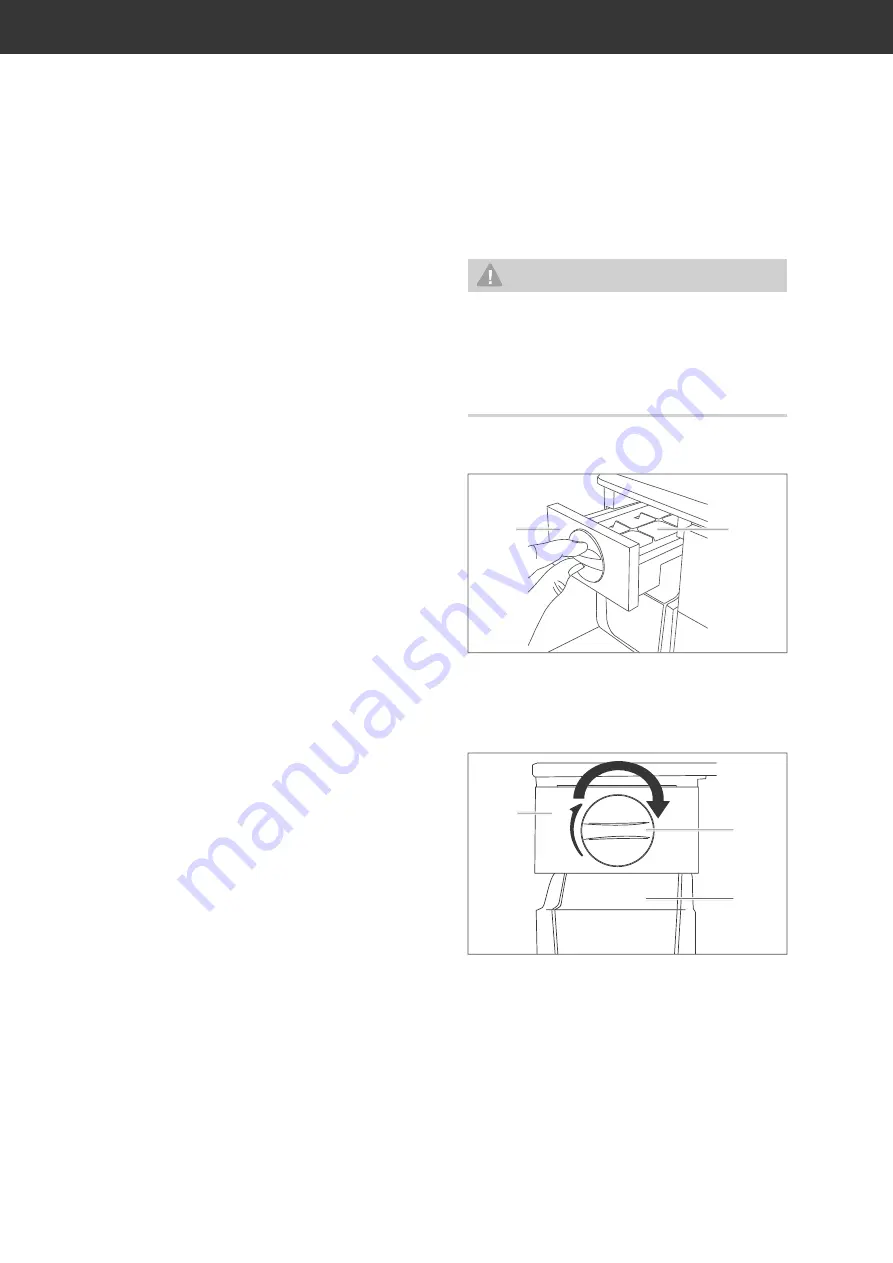
Freezing foods / storing frozen foods
Page EN-16
Storing frozen food
The deep-freeze chain must not be broken
between the manufacturer and your freezer.
The temperature of the frozen food must al-
ways be at least –18 °C.
• Therefore, do not buy any goods that
– are in frosty, over-icy chests.
– are stacked above the stipulated high-
load marker.
– partially clumped (particularly easy to
identify with berries and vegetables).
– have snow and juice traces.
• Transport frozen foods in special styro-
foam boxes or insulated bags.
• Observe the storage conditions and stor-
age times on the packaging.
Defrosting food
Observe the following basic rules when de-
frosting food:
– To defrost food, remove it from the freezer
and allow it to defrost at room temperature
or in the refrigerator for best results.
– To defrost food quickly, use the defrost
function on your microwave, for example.
Observe the manufacturer’s instructions
and note that bacteria and germs can form
in this way.
– Cook or use thawed foods as soon as pos-
sible.
– Dispose of the defrosting liquid.
– If you only want to defrost part of a pack,
remove the portion you need and immedi-
ately close the rest of the pack. This way
you will avoid ‘freezer burn’ and will reduce
ice formation on the remaining foods.
– Always defrost meat, poultry and fish in the
refrigerator. Make sure that the frozen food
is not immersed in its own thawing liquid.
Preparing ice cubes
WARNING
Health hazard!
Incorrect handling can lead to risks of
causing food poisoning.
■
Use only drinking water to make ice
cubes.
1. Remove the ice cube maker (9) from the
freezer.
(20)
(9)
2. Fill the ice tray (20) up to ¾ full with fresh
drinking water.
3. Replace the ice cube maker in the freezer
and wait until the water has frozen.
(21)
(11)
(9)
4. To loosen the ice cubes, turn the
knob (21) clockwise halfway.
The ice tray will bend slightly, and the ice
cubes will fall into the ice cube contain-
er (11).
5. Pull the ice cube maker out and remove
the ice cubes.














































